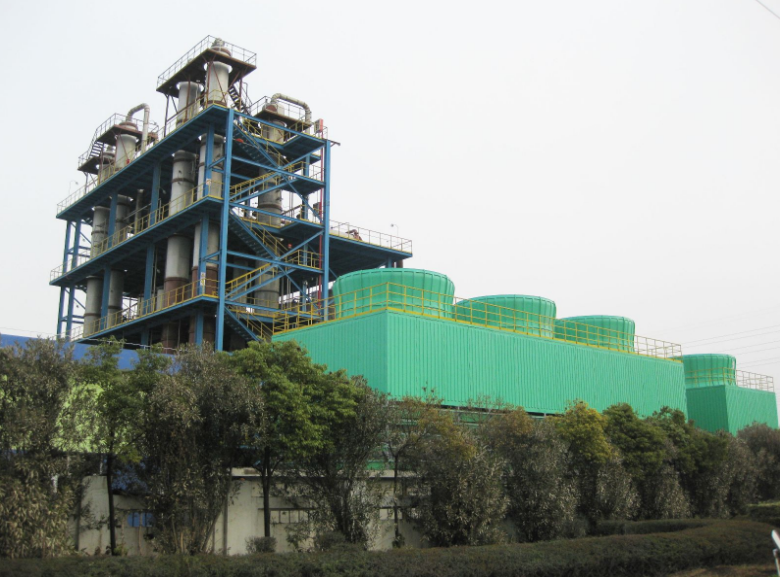Sec-butyl acetate, a versatile solvent with a myriad of industrial applications, is produced in specialized plants designed to ensure purity, efficiency, and scalability. Understanding the use and significance of these plants is essential for industries reliant on high-quality solvents. This article delves into the various uses of sec-butyl acetate plants, highlighting their importance in multiple sectors.
Production of High-Quality Solvents
Sec-butyl acetate is widely known for its exceptional solvent properties. It is utilized in the formulation of coatings, inks, and adhesives. The plants dedicated to producing sec-butyl acetate employ advanced chemical processes to ensure the solvent's high purity and consistency. These processes typically involve the esterification of acetic acid with sec-butyl alcohol, followed by rigorous purification steps. The resulting product is a high-purity solvent that meets the stringent requirements of various industries.
Applications in the Coatings Industry
One of the primary uses of sec-butyl acetate is in the coatings industry. Due to its excellent solvent properties, it is an integral component in the formulation of paints, varnishes, and lacquers. Sec-butyl acetate helps in improving the application properties of these coatings, such as leveling, gloss, and drying time. The solvent's ability to dissolve a wide range of resins makes it indispensable for producing high-performance coatings that are used in automotive, aerospace, and industrial applications.

Role in the Inks Industry
In the inks industry, sec-butyl acetate is used as a solvent in the production of printing inks. Its volatility and ability to dissolve pigments and binders effectively make it a preferred choice for ink formulations. Sec-butyl acetate ensures that the ink flows smoothly, dries quickly, and adheres well to various substrates. This is crucial for producing high-quality prints in both commercial and packaging printing.
Adhesives and Sealants
Sec-butyl acetate is also a key ingredient in the adhesives and sealants industry. It acts as a solvent that helps in the formulation of adhesives that require fast setting times and strong bonding properties. The solvent's ability to dissolve various polymers and resins ensures that the adhesives and sealants provide excellent performance in applications ranging from construction to consumer goods.
Environmental and Safety Considerations
Operating a sec-butyl acetate plant requires strict adherence to environmental and safety standards. The production process involves the handling of flammable and potentially hazardous chemicals. Therefore, plants are equipped with state-of-the-art safety systems, including leak detection, fire suppression, and emergency response protocols. Additionally, environmental regulations mandate the implementation of measures to minimize emissions and waste, ensuring that the production of sec-butyl acetate has a minimal impact on the environment.
Emission Control Technologies
Modern sec-butyl acetate plants incorporate emission control technologies to reduce the release of volatile organic compounds (VOCs) into the atmosphere. Technologies such as thermal oxidizers, scrubbers, and carbon adsorption systems are employed to capture and treat emissions. These technologies not only help in complying with regulatory requirements but also contribute to sustainable manufacturing practices.
Waste Management
Effective waste management is another critical aspect of operating a sec-butyl acetate plant. The production process generates waste streams that need to be managed properly to prevent environmental contamination. Plants implement recycling and waste treatment processes to handle by-products and effluents. This includes recovering and reusing solvents, treating wastewater, and safely disposing of hazardous waste.
Economic Impact and Market Demand
The demand for sec-butyl acetate is driven by its wide range of applications across various industries. The economic impact of sec-butyl acetate plants extends to the creation of jobs, stimulation of local economies, and contribution to the global chemical industry. The plants are strategically located to serve key markets efficiently, ensuring a steady supply of high-quality solvents.
Global Market Trends
The global market for sec-butyl acetate is influenced by trends in the coatings, inks, and adhesives industries. Growing industrialization, urbanization, and the increasing demand for high-performance materials are key factors driving the market. Additionally, the shift towards environmentally friendly and sustainable products is prompting manufacturers to innovate and improve their production processes.
Future Prospects
The future of sec-butyl acetate plants looks promising with advancements in chemical engineering and process optimization. The development of more efficient production methods, coupled with a focus on sustainability, will likely enhance the viability and profitability of these plants. Innovations in catalytic processes and the use of renewable raw materials are expected to further reduce the environmental footprint of sec-butyl acetate production.
Conclusion
Sec-butyl acetate plants play a crucial role in producing high-quality solvents essential for various industries. Their significance extends beyond mere production, encompassing environmental stewardship, safety, and economic contributions. As demand for high-performance solvents continues to grow, these plants will remain vital to meeting industry needs.
For more information on sourcing high-quality sec-butyl acetate and to discuss your requirements, contact us today. We are a leading supplier dedicated to providing top-notch chemical solutions to our clients.
















